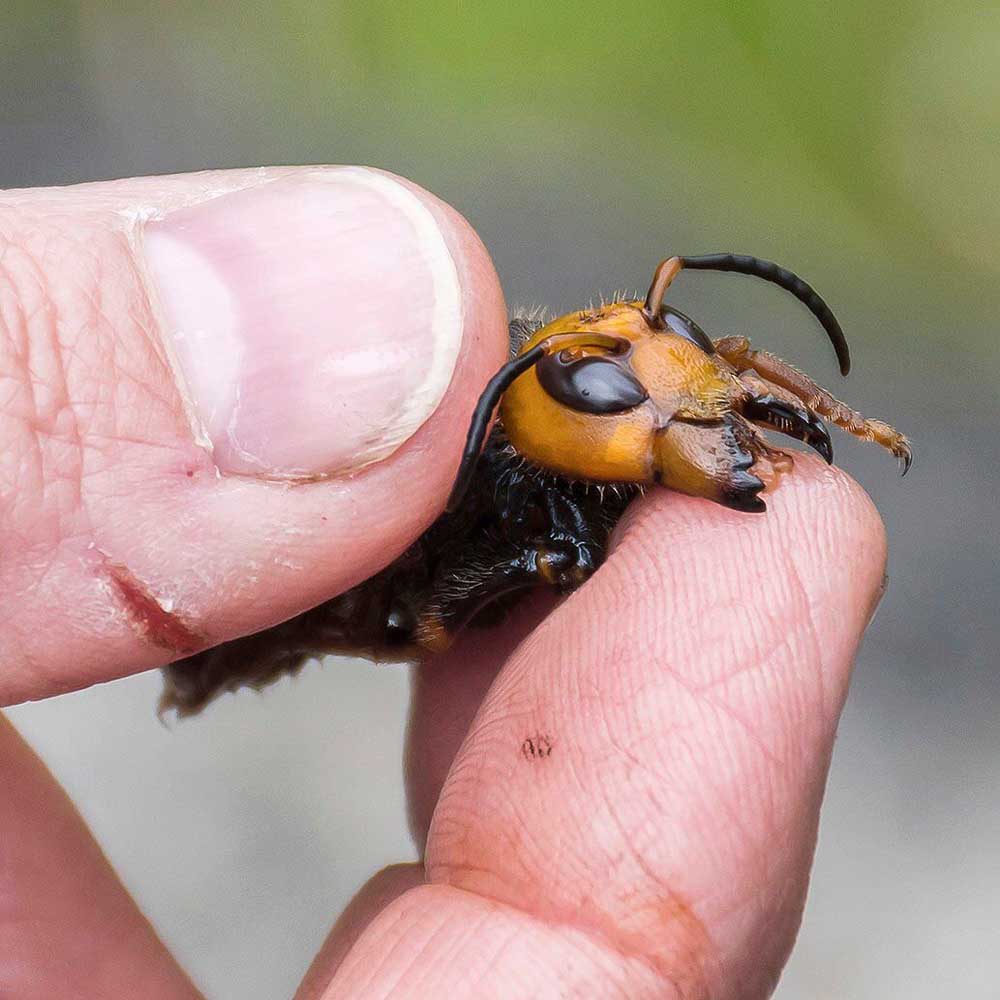Washington, B.C. resume hunt for scarce murder hornets
Published 2:15 pm Monday, July 31, 2023

- A northern giant hornet.
No “murder hornets” have been found in Washington or British Columbia for more than 21 months and odds are “very low” any will be detected this year, B.C. provincial apiculturist Paul van Westendorp said July 31.
Trending
The highly publicized invasive wasps, native to Asia, are too big to go unspotted for long if they are still around, he said.
“It’s pretty tough for these characters to remain non-detected,” he said. “These are not little minuscule things that can hide under a leaf you just walk by.”
Murder hornets, formerly known as Asian giant hornets but renamed northern giant hornets by entomologists, made their North American debut in 2019 by slaughtering bees on Vancouver Island.
Trending
Since then, the hornets have been found more often on the U.S. side of the border in northwest Washington. Four nests in Whatcom County and one on Vancouver Island have been found and eradicated.
The last northern giant hornet detected on either side of the border was Oct. 22, 2021. A dead hornet was found in a Japanese beetle trap in the Fraser Valley, just north of the border.
B.C. will set out about 50 hornet traps in the area this year, Westendorp said. If another year passes, the province will end the concerted trapping campaign, he said.
No northern giant hornet has been caught in a trap in B.C. baited specifically for northern giant hornets, Westendorp said.
“We haven’t found one bloody giant hornet in our traps,” he said. “We don’t mind if they remain empty.”
Entomologists have speculated the climate and prey are suitable for northern giant hornets to spread along the West Coast, threatening people with their painful stings and pollinators by their mass attacks.
The region needs to be alert to invasive hornets, but inhospitable terrain and in-breeding may have doomed this introduction from forming a reproducing population, Westendorp said.
“You simply can’t have a significant increase if brothers and sisters have to mate with each other,” he said.
The Washington State Department of Agriculture will set out more than 700 traps in Whatcom County this year. USDA protocol calls for no detections for three years before intense trapping ends.
In addition to the state traps, 84 “citizen scientists” have signed up to hang homemade traps baited with orange juice and rice wine. In 2020, more than 600 volunteers set out traps.
The covid-lockdowns and the search for something to do probably contributed too early enthusiasm, agriculture department spokeswoman Karla Salp said.
“People, I suspect, are less motivated to participate, which is unfortunate because it’s still important work,” she said.
“It’s very difficult to predict” detections, Salp said. “We hope we got them all. If that’s the case, the chances of a detection are nothing.”
Volunteers also can help the agriculture department by checking paper wasp nests around their homes. Northern giant hornets appear to be attracted to the meeker wasps.
Besides being big, northern giant hornets have distinctive orange heads.
Salp said she still fields a lot of suspected sightings on social media, “which is good,” she said. “We want people to report anything they think is a northern giant hornet.”









